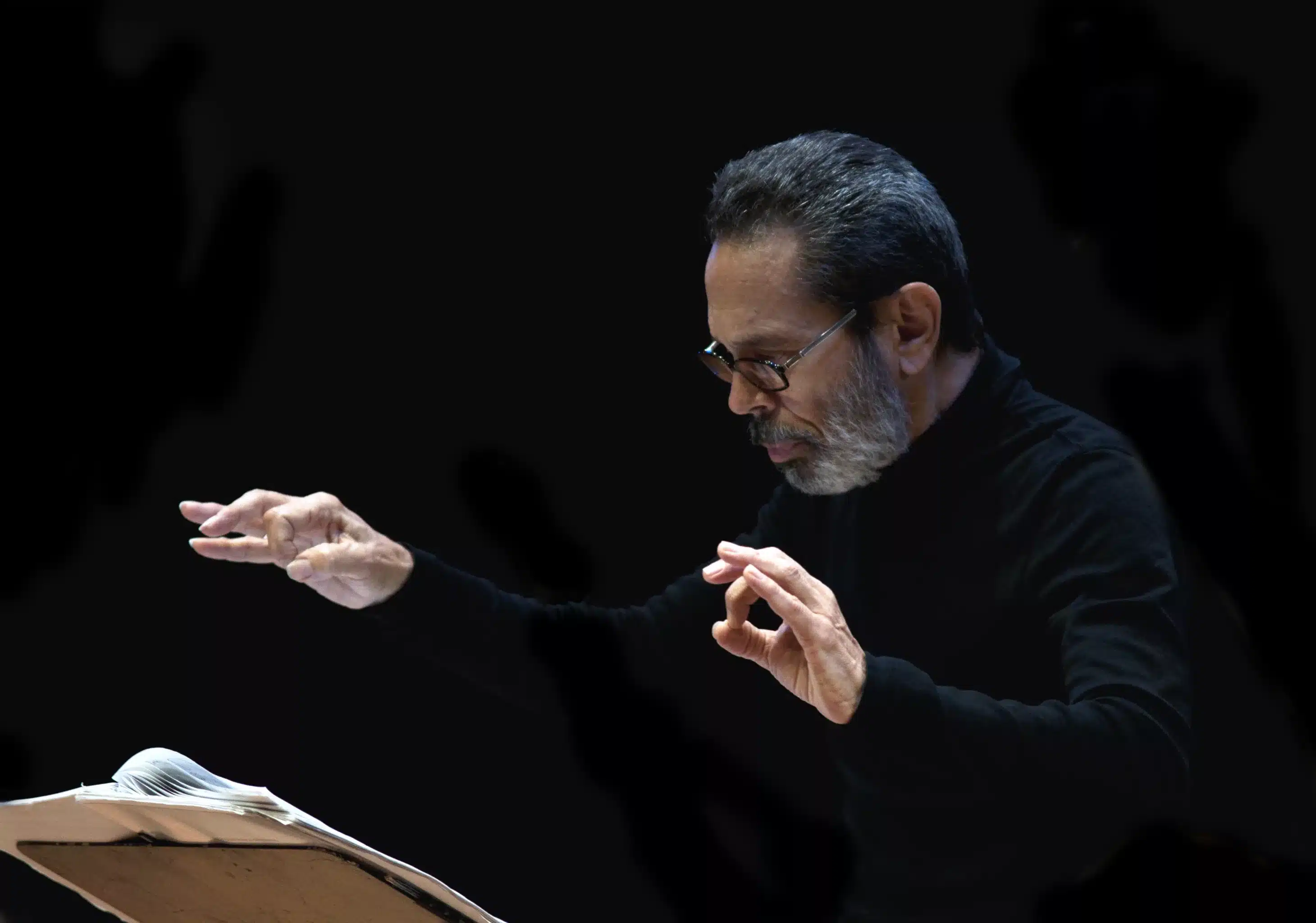In the enchanting realm where intricate melodies dance on the strings of classical guitars, a modern-day name reigns supreme: Leo Brouwer. As a luminary in musical composition, Brouwer’s genius transcends time, weaving a fascinating web of innovation and creativity that resonates with fans and newcomers to the classical music scene.
In this article, I wish to explore the evocative realm carved by Brouwer’s unparalleled vision, exploring how his revolutionary contributions forever transformed the landscape of guitar composition. We will embark on a fascinating journey through the corridors of Brouwer’s musical mind, where each note is a brushstroke that paints a vivid portrait of his unbridled artistry.
From intricate harmonies that whisper ancient stories to bold rhythms that reverberate with modernity, Brouwer’s masterpieces testify to his unparalleled ability to blend tradition and innovation. Continue reading to see the enigma behind Leo Brouwer’s transformative impact on guitar composition revealed. We will discover the secrets of his musical alchemy that continue to inspire and captivate audiences worldwide.
Early years and musical influences: the roots of Leo Brouwer’s artistic journey
Leo Brouwer, born March 1, 1939, in Havana, Cuba, was destined to become a musical prodigy. From an early age, Brouwer showed an innate talent for music and was soon captivated by the enchanting melodies emanating from his father’s guitar. The latter, Ernesto Brouwer, was a doctor and amateur guitarist who introduced Leo to classical music.
Under the guidance of his father, Leo began his musical education at an early age. He studied piano and music theory before finding his true passion in guitar. Inspired by the works of renowned composers such as Bach and Mozart, Brouwer embarked on a lifelong journey to master this versatile instrument.
Beyond the classical realm, Brouwer drew inspiration from various genres and styles of music. He explored Cuban folk music and jazz harmonies and experimented with avant-garde techniques. This wide range of influences would later shape his unique musical voice. Moreover, Cuban culture has strongly influenced his style and has often been a source of inspiration for the composition of evocative works with rustic features, the setting of which is precisely the characteristic landscape of the Central American island.

Evolution of style: tracing the development of Brouwer’s unique musical voice
As Leo Brouwer matured as a musician and composer, his style evolved considerably. Traces of traditional classical guitar techniques can be heard in his early compositions. However, as he deepened his art and explored new horizons, Brouwer began to incorporate innovative elements into his compositions, moving toward the domain of atonality and the deconstruction of melody into isolated sound fragments.
Brouwer’s style can be characterized by his intricate harmonies that evoke deep emotions in listeners. His compositions often feature complex rhythms that defy conventional expectations while maintaining a sense of melodic beauty.
Throughout his career, Brouwer has continually pushed boundaries and experimented with new approaches to composition. His willingness to embrace unconventional techniques and blend various musical genres has enabled him to create a distinct musical language that resonates with audiences worldwide.
Revolutionary works: unveiling the masterpieces that defined Brouwer’s legacy
Leo Brouwer’s body of work is a testament to his unparalleled genius. His compositions span various genres, from solo guitar pieces to orchestral works. Each piece showcases his compositional mastery and ability to convey deep emotions through music.
One of Brouwer’s most famous works is “Elogio de la Danza” (In Praise of Dance), a solo guitar piece showcasing his innovative approach to rhythm and harmony. This composition exemplifies Brouwer’s ability to blend traditional elements with contemporary techniques, creating a captivating listening experience. Similarly, “El Decameron Negro,” offers the listener three episodes of what might seem like an example of contemporary program music, but which also draws inspiration from ancient culture and epic and mythological tales.
Another Brouwer masterpiece is “Concerto de Toronto,” a concerto for guitar and orchestra. This groundbreaking work highlights his ability to orchestrate complex textures while allowing the guitar to shine as a solo instrument. In a context dominated by stagnation vis-à-vis Joaquin Rodrigo’s Concerto de Aranjuez, Brouwer’s works shine as beacons for musical research to finally turn toward new reference points.
Innovation in technique: exploring Brouwer’s revolutionary approaches to guitar composition
Leo Brouwer revolutionized the world of guitar composition through his innovative techniques and approaches. He expanded the instrument’s possibilities by incorporating extended techniques such as percussive effects, harmonics, and unconventional performance methods.
Brouwer also experimented with nontraditional tunings, pushing the boundaries of what was possible on the guitar. These explorations opened up new avenues of expression and expanded the sound palette available to composers and artists.
His approach to composition often involved incorporating elements of other musical traditions, blurring the boundaries between classical music and other genres. Embracing diverse influences, Brouwer has created a rich tapestry of sounds that captivate listeners and challenge traditional notions of guitar music.
Fusing genres: how Brouwer blurred the line between traditional and contemporary music
Leo Brouwer’s compositions defy categorization as he seamlessly blends elements of various musical genres. His works incorporate classical, jazz, folk, and avant-garde music elements, creating a unique fusion that transcends traditional boundaries.
Brouwer’s genre-blurring compositions expanded the classical guitar repertoire and attracted a diverse audience. His ability to bridge the gap between different musical worlds has made his music accessible to traditional classical music fans and those with a penchant for contemporary sounds.

Global impact: Brouwer’s influence on guitarists and composers around the world
Leo Brouwer’s impact on the world of guitar composition extends far beyond his native Cuba. His innovative techniques and groundbreaking compositions have inspired countless guitarists and composers worldwide.
Works such as “Canticum” or “Tarantos” represent an effort toward pure sound exploration, with the search for an abstractionism that transcends pure melodic evolution to focus on well-defined “sound episodes.” Making a comparison, if the traditional style is based on the continuous unfolding of a flow of sounds, these compositions are likened to sequences of photographic shots depicting scenes that are often not directly related.
Guitarists who study Brouwer’s works are exposed to new possibilities in technique, interpretation, and composition. His influence can be heard in the performances of virtuosos worldwide who strive to capture the essence of his unique musical voice.
Beyond guitarists, Brouwer’s compositional style has influenced composers of various backgrounds. His ability to blend genres and create evocative musical landscapes has inspired a new generation of composers to explore unconventional approaches to composition.
Legacy and recognition: honoring Leo Brouwer’s contributions to classical music
The impact of Leo Brouwer’s contributions to classical music cannot be overstated. Throughout his career, he has received numerous awards for his innovative compositions and dedication to expanding the possibilities of guitar music.
In 1987, Brouwer was awarded the UNESCO International Music Prize, recognizing his outstanding contributions to the field of music. He has also received numerous Grammy nominations for his compositions and recordings.
Brouwer’s legacy is measured not only by his awards and accolades but also by the lasting impact of his music. His compositions continue to be performed and celebrated by musicians and audiences worldwide, ensuring that his artistic vision will survive for generations.
Continuing the legacy: how Brouwer’s work continues to shape the future of guitar composition
Leo Brouwer’s influence on guitar composition extends beyond his work. As a teacher and mentor, he has raised countless young musicians, passing on his knowledge and inspiring them to push the boundaries of their art.
His pedagogical approach emphasizes a holistic understanding of music, encouraging students to explore various genres and styles. Instilling a sense of curiosity and openness in his students, Brouwer ensures that his legacy will continue through future generations of guitarists and composers.
Inspirations and aspirations: unveiling the creative process behind Brouwer’s compositions
The creative process behind Leo Brouwer’s compositions is as varied as the influences that shape them. Drawing inspiration from literature, visual arts, and personal experiences, he weaves intricate musical narratives that captivate listeners.
Brouwer often begins with a concept or idea that stimulates his imagination. He meticulously creates each note from there, exploring different harmonies, rhythms, and textures until the desired emotional impact is achieved.
Collaboration also plays a significant role in Brouwer’s creative process. He has worked closely with renowned artists and ensembles to bring his compositions to life. This collaborative approach allows him to refine his ideas through experimentation and feedback from other musicians.
The bottom line is to celebrate the enduring musical genius of Leo Brouwer.
Leo Brouwer’s contributions to guitar composition have left an indelible mark on classical music. His innovative techniques, genre-blurring compositions, and dedication to pushing artistic boundaries have forever transformed the landscape of guitar music.
While celebrating his enduring musical genius, we must continue to explore and appreciate the rich texture of sounds that Leo Brouwer has given us and continues to give us. Through his compositions, he invites us on a journey of discovery, where tradition and innovation are woven into a harmonious unity.
I hope you will join the large group of admirers in honoring Leo Brouwer’s legacy by immersing yourself in his captivating compositions and allowing his music to ignite your imagination. In this regard, I would like to include an album recorded by guitarist Luca Romanelli, which can serve as a “calling card” to learn about the style and characteristics of the master’s composition.
If you like this post, you can always donate to support my activity! One coffee is enough!

